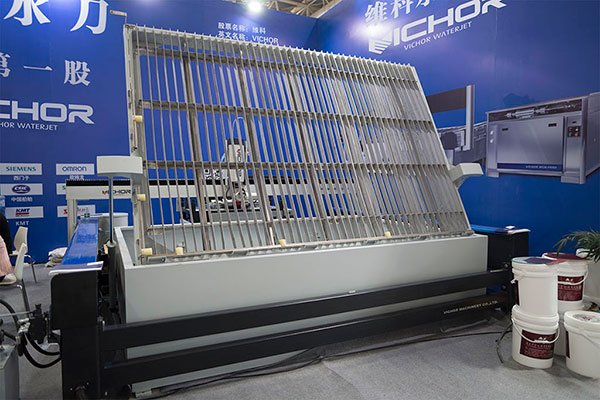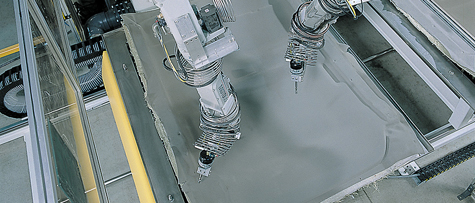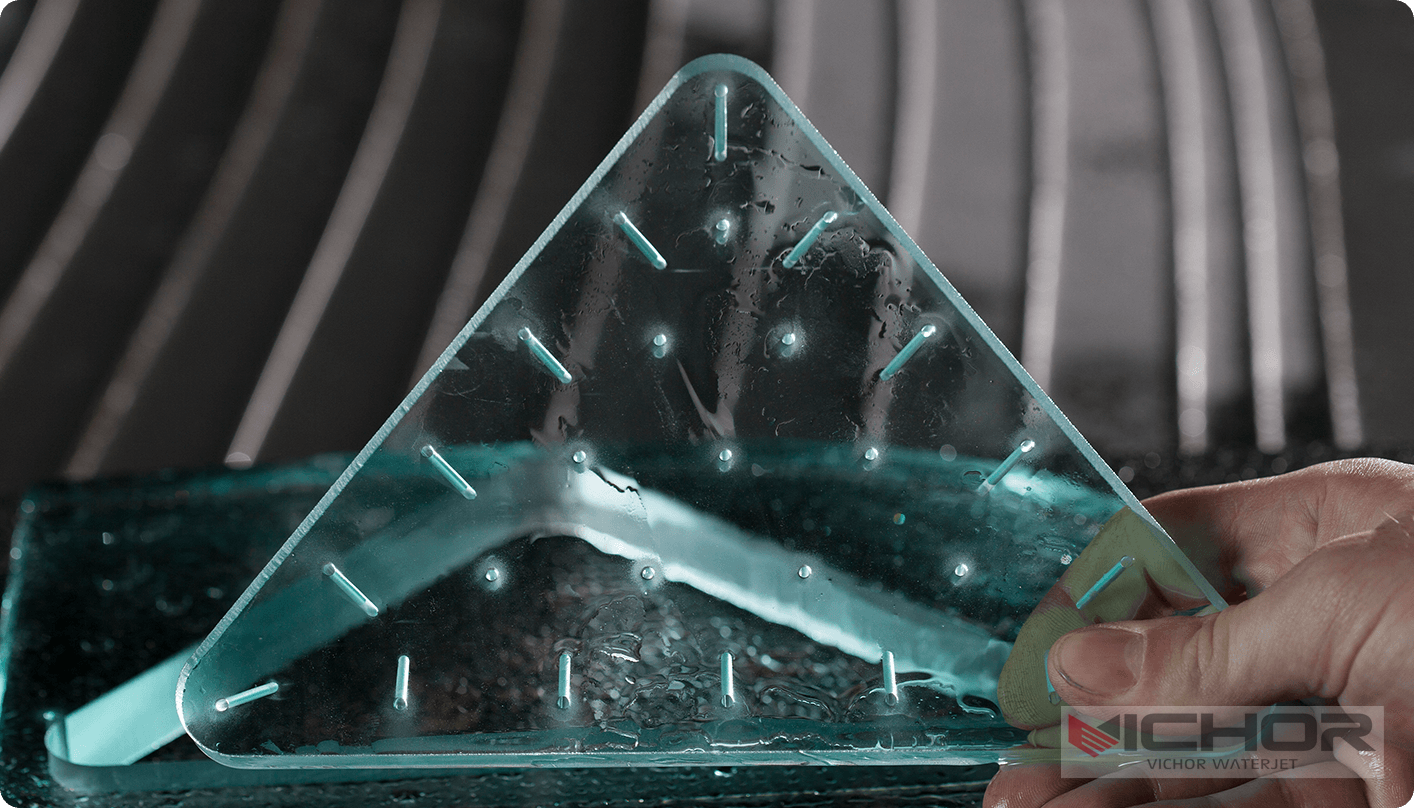
What is a 6 Axis Waterjet? Exploring Its Capabilities and Solving Common Challenges
In the realm of advanced manufacturing and precision cutting, few technologies offer the versatility and raw power of waterjet cutting. But within this field, a specific innovation stands out for its unparalleled capability to create complex geometries with astonishing accuracy: the 6 axis waterjet. This technology transcends the limitations of traditional cutting methods, opening up new possibilities for designers and engineers across countless industries. But what exactly sets it apart? This article delves deep into the world of 6 axis waterjet technology, exploring its mechanics, advantages, applications, and how it compares to other methods. We will also address the most common questions and challenges operators face, providing a comprehensive understanding of this remarkable tool.
Understanding the Core Technology: What is a 6 Axis Waterjet?
At its simplest, a waterjet cutter uses a high-pressure stream of water, often mixed with an abrasive substance like garnet, to erode and cut through material. Traditional waterjet systems operate on 3 axes: X (left-right), Y (front-back), and Z (up-down). This is sufficient for cutting flat, 2D shapes.
A 6 axis waterjet system incorporates three additional rotational axes (A, B, and C), allowing the cutting head to tilt and rotate at virtually any angle. Imagine a robotic wrist attached to the end of the waterjet nozzle. This “wrist” can dynamically articulate during the cutting process. This means the nozzle is not just moving in a flat plane; it can orient itself perpendicular to the surface of a contoured or 3D workpiece at all times. This constant perpendicularity is the key to achieving high-precision bevels, chamfers, and complex 3D cuts without the taper (or “V” shape) typically associated with standard waterjets.
The Unmatched Advantages of Using a 6 Axis Waterjet
The investment in a 6 axis waterjet system is justified by a host of significant benefits that streamline production and enhance design freedom.
Elimination of Taper (Near-Zero Taper): This is the most celebrated advantage. In 3-axis cutting, the water stream naturally widens as it travels through the material, creating a slightly wider cut at the bottom than the top. The 6 axis waterjet head tilts to compensate for this natural divergence, resulting in perfectly straight, parallel cuts on both sides of the material, even on beveled edges.
Complex 3D Cutting and Beveling: It can perform intricate cutting operations on pre-formed parts, such as cutting holes or windows in domes, cylinders, or other complex shapes. It can also create precise weld prep bevels on curved surfaces in a single setup, saving immense time and labor.
Dramatically Reduced Secondary Operations: By cutting finished bevels and complex shapes directly, the need for subsequent milling, grinding, or manual finishing is drastically reduced. This slashes production time, lowers labor costs, and minimizes handling of parts.
Superior Precision and Part Quality: The ability to maintain a consistent standoff distance and optimal cutting angle across uneven surfaces ensures exceptional edge quality and dimensional accuracy, part after part.
Massive Material Versatility: Like all waterjets, the 6 axis waterjet can cut almost any material—metals (titanium, aluminum, steel), stone, glass, composites, and plastics. The 6-axis functionality extends this versatility into the third dimension.
Key Industries Transformed by 6 Axis Waterjet Technology
The unique capabilities of this technology have made it indispensable in several high-precision sectors.
Aerospace and Aviation: Used for cutting intricate components from advanced composites, creating light-weighting structures, and preparing complex parts for welding. The ability to handle expensive materials like titanium with minimal kerf loss is critical.
Automotive and Motorsports: Ideal for prototyping, customizing parts, and cutting interior components, dashboards, and body panels with complex contours. It’s also used for trimming composite parts.
Architecture and Art: Allows artists and architects to create stunning 3D sculptures, signage with beveled letters, and complex architectural elements from stone, metal, and glass.
Marine Industry: Essential for cutting and beveling hull components, pipes, and other parts that require a perfect fit for welding on curved surfaces.
General Heavy Fabrication: Used for preparing large structural components for welding, ensuring perfect fit-up and strong, reliable welds.
6 Axis Waterjet vs. Other Cutting Methods: A Clear Comparison
How does a 6 axis waterjet stack up against other popular cutting technologies?
vs. 5-Axis Machining: 5-axis mills are fantastic for machining solid blocks of material but struggle with thin sheets and are limited by the strength and reach of their cutting tools. A 6 axis waterjet exerts no lateral force, allowing it to cut delicate materials and intricate patterns without clamping issues. It also has no heat-affected zone (HAZ), unlike machining which can alter material properties.
vs. Laser Cutting: Lasers are fast and precise for 2D metal cutting but are limited to materials that can be vaporized and are susceptible to heat damage. A 6 axis waterjet cuts without heat, making it suitable for materials like composites, plastics, and reflective metals (copper, brass) that are challenging for lasers. It also far surpasses lasers in cutting thick materials.
vs. 3-Axis Waterjet: The comparison is simple: 3-axis for flat, 2D parts; 6 axis waterjet for everything else that requires dimensional cutting, beveling, or contouring.
Addressing Common Questions and Challenges with 6 Axis Waterjets
Operating such advanced machinery comes with specific questions. Here are answers to some of the most frequent queries.
Q1: Is the programming for a 6 axis waterjet extremely complex?
A: While more complex than 3-axis programming, modern CAD/CAM software has simplified the process immensely. Operators can design a part in 3D, and the software automatically generates the toolpath, calculating the necessary head tilts and rotations. The complexity lies more in the initial setup and operator training than in the daily programming.
Q2: How do you manage the abrasive stream in a tilting head?
A: This is a key engineering challenge. Systems use precisely engineered rotary connectors and specialized mixing tubes designed to handle the abrasive flow smoothly even when the head is at extreme angles, ensuring consistent cutting performance.
Q3: What is the typical maintenance routine for a 6 axis system?
A: It requires all the maintenance of a standard waterjet (e.g., replacing seals, inspecting high-pressure components, maintaining the abrasive delivery system) with additional focus on the rotary axes. The bearings and mechanical components of the articulating head need regular inspection and lubrication to maintain their precision.
Q4: Are the operating costs significantly higher than for a 3-axis machine?
A: The initial investment and potential maintenance costs are higher. However, this must be weighed against the value it adds. The elimination of secondary operations often leads to a net reduction in total part cost and faster time-to-market, providing a strong return on investment for shops that need its capabilities.
Q5: What materials pose the biggest challenge for a 6 axis waterjet?
A: While versatile, very thick, dense materials (over 8-10 inches of hardened steel) can be slow to cut. The technology can still handle them, but cycle times may be long. The focus is on precision and geometry rather than pure speed on the thickest materials.
The 6 axis waterjet is more than just a cutting tool; it is a transformative manufacturing solution that bridges the gap between simple 2D profiling and complex 3D fabrication. Its ability to produce taper-free, ready-to-weld components from virtually any material makes it an invaluable asset in high-tech industries where precision, efficiency, and design flexibility are paramount. While it presents unique operational considerations, the advancements in software and machine design have made its powerful capabilities more accessible than ever. For any fabrication business looking to push the boundaries of what’s possible, integrating a 6 axis waterjet is a strategic step towards the future of manufacturing.
continue reading
Related Posts
- 1324 words6.7 min read




